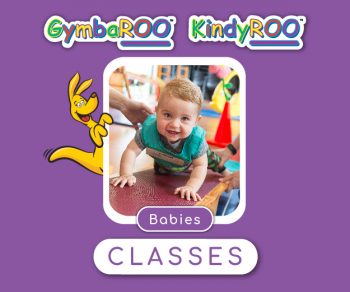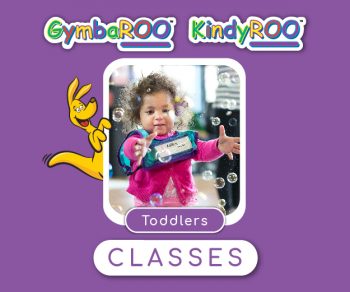You may have noticed that children like to take their time – something small holds their attention for ages, especially when the adults are in a hurry!! However we can manage this better when we understand the process behind their slowness and the speed of activities and completed and music used by GymbaROO-KindyROO teachers. In the case of learning, slow and steady is good. This article gives you the reasons why slow activities and slow music are perfect for developing brains.
Children’s learning is at its greatest when they are engaged in an activity. This begins at birth as they work to achieve controlled movements to get items they want and then move around their environments. Research by Esther Thelen 1 showed that children develop their movements differently, but they arrive at the same goal. Another well- known developmental theorist, Vygotsky,2 stressed the importance of interacting with the environment and the people within. A Swedish/Danish3 study found that teachers believed that participation and being involved in activities were keys to successful learning.
With these facts, what can we do as the first teachers of children to provide the optimal learning environment? If you observe children, you will notice that while they are attempting to master a skill they go slowly. This gives the brain time to organise whatever needs organising, muscles, words, or thoughts. As the child progresses, they are able to manage the task a little more quickly. As they get older some children will rush through an activity, skimming the surface so they can move on quickly. When a teacher or adult asks them to slow down, it becomes obvious that they do not have the skill base to complete the task accurately.
Experienced teachers demonstrate activities slowly, and there may be multiple repetitions. If you are an observing parent this can seem so slow and painful. However the Swedish/Danish 3 study also highlighted that children need challenges that are adjusted to their level of development, but that also extend them a little. The bottom line is that slow and deliberate is good for the brain of the child and allows greater well-established skill development. When you are participating with a baby it can feel very slow, but if you do activities too quickly, the benefit for the child is reduced.
Music falls under the same rules. When you observe children attempting to follow actions of music that is too fast, they either give up, or they just jiggle as a way of coping. Neither of those options help the child develop skills or adhere to the understanding that participation is crucial for learning. Again, slow is good.
When you are watching something designed for children that is slow and deliberate, or you are listening to slow music, you can now muse to yourself that while this is painful for me as an adult, this person/musician clearly understands young children’s development!
- Thelen E, Corbetta D. Development of reaching during the first year: Role of movement speed. Journal of Experimental Psychology Human Perception & Performance. 1996;22(5):1059.
- Smidt S. Introducing Vygotsky: A guide for practitioner and students in early years education. New York, NY: Routledge; 2009.
- Broström S, Johansson I, Sandberg A, Frøkjær T. Preschool teachers’ view on learning in preschool in Sweden and Denmark. European Early Childhood Education Research Journal. 2014;22(5):590-603.
You may also like to read:









